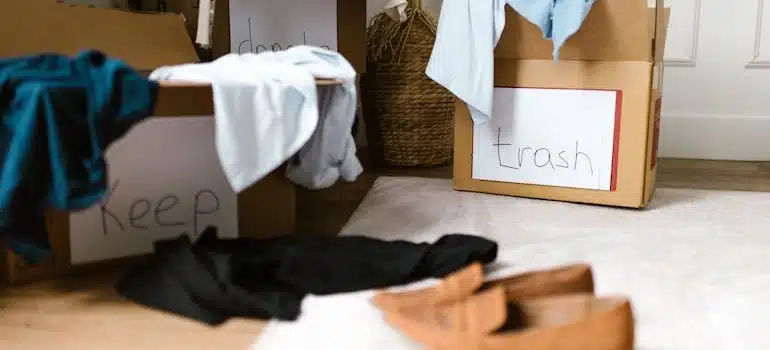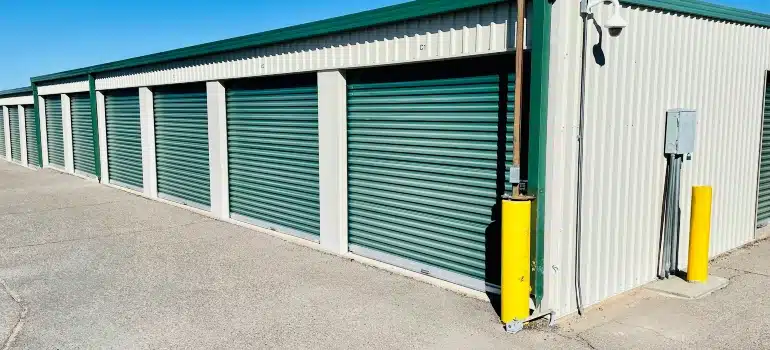How much does it cost to rent a storage unit in Miami?
Finding extra space in Miami can be challenging, whether you are moving, downsizing, or storing seasonal items. Many residents and businesses turn to self-storage as a flexible solution. But how much does it cost to rent a storage unit in Miami? Prices depend on several factors. Knowing what to expect helps you plan your budget and choose the right option. In this Pro Movers Miami guide, we’ll break down average costs, key factors, and money-saving tips so you can find storage that fits your needs. Start comparing rates today and secure your ideal unit.
Factors that influence Miami storage rental costs
Storage prices in Miami vary widely because several details shape the monthly rate. Knowing how these factors work helps you budget better for storage units in Miami and avoid overpaying.
Unit size
The size of the unit is one of the most defining factors for the final cost of renting. However, it is important to choose the appropriate size of the storage unit so that your items are never at risk of getting damaged.
Here are the self-storage unit sizes and prices according to national storage data, and what can fit into them:
- 5 x 5 storage unit – On average, small units like these range from $50 to $90 per month. These are great for boxes, small furniture, or seasonal items.
- 5 × 10 storage unit – It is a fairly small unit, and you can store around a dozen boxes here, or a piece of furniture such as a sofa, closet, or a chest of drawers. As of mid-2025, the average price of this unit size in Miami is about $99 per month. A unit of this size is ideal for college students if they can’t fit all of their belongings in their dorm room.
- 10 × 10 storage unit – A space large enough to store a one-bedroom apartment, including the larger appliances and some furniture. The average price is now around $170 per month in Miami for non-climate-controlled units.
- 10 × 20 storage unit – Here you can store a two- or even three-bedroom home, depending on the size of the rooms. All of your furniture and appliances can fit in here. The current average price for a 10 × 20 unit in Miami is roughly $309 per month for non-climate-controlled; for climate-controlled, it can go up to about $376 per month.
Many renters ask, how much is a storage unit per month in Miami? Expect most people to pay around $150 monthly for mid-size units. This price reflects Miami’s high demand and humid climate. Suburban locations may offer lower rates than downtown.
While there are benefits of short-term storage rental in Miami, longer rental periods usually come with lower monthly rates. When comparing options, consider whether you need climate control and extended access, since both affect price.

Location in Miami
Where the facility sits in the city makes a major difference. Units in central Miami neighborhoods like Brickell, Downtown, or near Miami Beach usually come with higher rates due to strong demand and limited space. Facilities in suburban areas such as Kendall, Hialeah, or Doral often charge less, even for the same size unit. If you don’t need frequent access, picking a suburban location can save you 10–20% each month.
Climate control
Miami’s tropical weather brings extreme humidity, high temperatures, and seasonal storms. These conditions can damage wood, electronics, fabrics, and documents. Climate-controlled storage helps prevent mold, warping, and corrosion but usually adds $30 to $60 on top of the base rental price. For many renters, this upgrade is worth the extra cost to protect valuable belongings.
Accessibility
Facilities that offer 24/7 access often charge more than those with limited business hours. Round-the-clock entry provides flexibility, especially for people storing business inventory or who move frequently. However, if you only need occasional access, you may save money by choosing a location with standard hours. Always ask whether extended access carries an added fee.
Security features
Security is another factor that shapes costs. Units in gated facilities with on-site staff, video surveillance, and alarm systems are usually more expensive. While some renters are fine with basic locks, others prefer the peace of mind that comes with white glove storage and advanced safety features. In Miami, where storage demand is high, facilities with strong security often justify the higher monthly rate.
Demand and seasonality
Storage prices in Miami change with demand. Costs often rise during the summer when many families move, as well as during hurricane season when people store furniture, equipment, and valuables. Higher demand means fewer available units, which drives up rental rates. Booking early or choosing off-peak months can help you find better deals.
Cost breakdown: short-term vs. long-term rentals
Storage needs in Miami often vary based on how long you plan to rent. Some people only require space for a summer break, while others keep belongings stored for several years. Understanding how prices change over time helps you make the right decision.
For short-term needs, most facilities offer month-to-month agreements. This flexibility is useful but comes at a slightly higher rate. Renters often ask, how much does storage cost for 3 months? On average, a small 5×10 unit for three months in Miami costs around $300 total, while a 10×10 may cost closer to $510. Longer rentals, like six months or a year, often come with discounts or promotions such as “first month free” or reduced monthly rates.
For businesses or families planning long-term storage, signing a six- or twelve-month agreement can save 10–20% compared to standard monthly rates. Always check if the facility requires prepayment or a deposit before locking in a discounted plan.

Climate-controlled storage in Miami
Miami’s hot and humid climate makes climate-controlled units a popular choice. Standard storage may work for short-term needs, but over time, heat and moisture can damage valuables. Items like wood furniture, leather, electronics, photos, and documents are especially at risk.
Climate-controlled storage keeps temperature and humidity stable, protecting belongings from mold, warping, and corrosion. This feature usually adds $30 to $70 per month, depending on the unit size. For example, a 10×10 climate-controlled unit in Miami often costs around $190 to $220 monthly, compared to $170 for a non-climate option.
While some renters hesitate at the higher price, the added protection is often worth it. Miami’s weather conditions can be harsh year-round, and paying a little more up front can prevent costly damage later. If you plan to store sensitive or high-value items, climate control is not just a luxury—it’s a smart investment.
Comparing storage prices in Miami vs. other Florida cities
Miami often has higher storage rates compared to other Florida markets. Population density, real estate costs, and year-round demand all contribute to this difference. Renters asking, how much is it to rent a storage unit in Florida? should know that prices vary greatly by city.
Here are the average monthly costs for a 10×10 non-climate-controlled unit in 2025:
- Miami – around $170
- Fort Lauderdale – about $150
- Orlando – averages $135
- Tampa – around $140
- Smaller Florida suburbs – sometimes under $120
Climate-controlled storage follows the same trend. Miami’s humidity makes it more common, so climate units are in higher demand and cost more. In Orlando or Tampa, a climate-controlled 10×10 might stay under $160, while in Miami, it often reaches $200 or more.
These comparisons show why Miami renters often pay a premium. If location flexibility isn’t critical, choosing a nearby city or suburb may save 10–20% monthly.

Extra fees and hidden costs
When calculating storage expenses, it’s important to think beyond monthly rent. Extra fees often raise the total cost of storing in Miami.
One common add-on is insurance. Many facilities require it, and monthly premiums can add $10 to $25, depending on coverage. Administrative or setup fees may also appear at sign-up, ranging from $20 to $50. Some locations request a refundable deposit at the start of your rental.
Locks and supplies are another overlooked expense. Facilities often sell high-security locks for $15 to $20. Boxes, tape, or shelving purchased onsite may also increase your costs. If you miss a payment, late fees can apply, and storage auctions are possible if accounts remain unpaid.
Finally, transportation is an added consideration. Some companies offer truck rentals or pickup services for an extra charge, typically between $50 and $150. Factoring these hidden costs into your budget helps avoid unpleasant surprises and keeps your storage plan realistic.
Tips for saving money on Miami storage rentals
Finding affordable storage in Miami is possible when you use the right strategies. The following approaches can help both residents and businesses cut costs without sacrificing quality:
- Compare prices online – Many companies in Miami list online-only rates that are lower than in-person quotes. Booking early also helps you secure discounts before peak demand drives prices higher.
- Choose suburban locations – Downtown, Brickell, and Miami Beach units often cost the most. Facilities in Kendall, Doral, or Hialeah usually charge less, making them a smarter option if you don’t need daily access.
- Pick the right unit size – Renting a smaller unit lowers monthly costs. Decluttering before storage and adding shelves to maximize vertical space are easy ways to reduce size needs. Using professional packing services Miami residents trust can also help. Skilled packers organize belongings efficiently, protect fragile items, and make better use of box space.
- Use climate control selectively – Climate-controlled storage is valuable for electronics, wood furniture, and documents, but it isn’t always needed. Placing less sensitive items in standard units helps balance cost and protection.
- Take advantage of promotions – Many facilities offer deals such as the first month free, long-term rental discounts, or special rates for students and military members. Businesses may also receive reduced rates when renting multiple units.
- Share storage space – Splitting a larger unit with a friend, family member, or business partner can cut expenses. A 10×20 shared between two people often costs less per person than renting smaller units separately.
Combining these strategies makes it possible to find secure storage in Miami without overspending. Careful planning and flexibility often lead to savings of 10–20% or more each month.

FAQs to know before you rent a storage unit in Miami
Got questions about storage? No need to box up your curiosity. We’ve packed the most common ones into this FAQ so you can unpack the answers with ease.
Q: How much is a storage unit per month in Miami?
A: In 2025, a 10×10 non-climate unit costs about $170 per month. Climate-controlled versions average $200–$220.
Q: How much does storage cost for 3 months in Miami?
A: A small 5×10 unit usually totals around $300 for three months. Larger 10×10 units average about $510 for the same period.
Q: How much is it to rent a storage unit in Florida compared to Miami?
A: Florida averages $135–$150 monthly for a 10×10 unit, while Miami averages closer to $170 due to higher demand.
Q: Do climate-controlled storage units in Miami cost more?
A: Yes. Expect to pay $30–$70 more per month, depending on the unit size and location.
Q: What size storage unit is cheapest in Miami?
A: The smallest 5×5 and 5×10 units are the cheapest, usually $90–$100 per month.
Q: Are there extra fees when renting a storage unit in Miami?
A: Yes. Insurance, deposits, admin fees, and late payment charges can add $20–$50 monthly.
Q: Can I get discounts for long-term storage rentals in Miami?
A: Many facilities offer reduced monthly rates or one month free for six- or twelve-month rentals.
What to keep in mind before you rent a storage unit in Miami
Storage rentals in Miami serve a wide range of needs, from short household use to long-term business solutions. Facilities differ in size, security, and features, giving renters the flexibility to choose what fits their situation. Because of the city’s climate, many people who move to Miami consider climate-controlled options essential, especially for furniture or electronics.
Costs extend beyond the base rent, with insurance, deposits, and locks often added. At the same time, discounts, promotions, and shared units can reduce expenses. With these factors in mind, planning makes it easier to rent a storage unit in Miami that protects your belongings and fits your budget.
